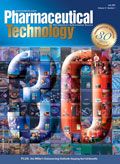What Once Was
The good ol' days weren't always good.
"For Pharmaceutical Technology's 30th anniversary, I held a special GMP Agents-in-Place meeting at our safe house," Control reports. "We discussed all the changes since the 1979 GMPs were issued. Here are some of the things we used to get away with. Some are funny, others are just plain sad. Do you have any additional ones?"
- Sell nonconforming products overseas
- Retest a batch repeatedly until it passed, then release it on that single, last-passing result
- Assign a shortened expiration date to a batch when the release test was low but in specifications
- Document then manufacture 10 batches of an over-the-counter product on the same one-page batch card
- Use mixers with dead spots such as some ribbon blenders
- Reworked nonconforming product without a new drug application (NDA) supplement approval because it was just repeating a step (or two) of manufacturing; for example, size (grind up) tablets and recompress them
- After a failing release test result, resample and retest; then release the batch if it passed
- File very general NDAs with one-page manufacturing descriptions; specify equipment only by stating "appropriate," as in "put ingredients in an appropriate blender"
- No security on computer systems used, walk up, turn on, and use them
- Perform sterility tests with sterile gloves under a hood with sliding (up and down) door
- Release batches with manufacturing problems with an investigation that merely says "batch met specifications —released"
- When there was a stability failure at the final time point (e.g., expiration date), the investigation only said "the batch is beyond expiry date, no action required."
- Fog aseptic fill rooms with dangerous chemicals such as formaldehyde for disinfection purposes
- Sterilize gowns used in aseptic processing through formaldehde fogging
- Use cut labels
- Clean tablet-packaging machinery using a hand-held high-pressure air wand
- Environmental testing of aseptic filling suites on a monthly or even quarterly basis
- Freeze-dry product using two separate machines: a freezer to freeze the product, then manually move the vials to a vacuum oven in which there is no cooling, just vacuum and heat
- Hand placement of stoppers on aseptically filled vials
- Clean equipment without even a visual check that its clean, and no swab or rinse testing
- Average water-for-injection system total colony forming units count data from all the test sites to "average within limits" even though some individual tests are outside of limits
- Test a batch repeatedly until the average is within product specifications, then release it
- Use square root (N) + 1 as a routine sampling number everywhere sampling was needed
- Blend stumps (small portions remaining after a batch is made) to make another full lot
- Start the expiration date from the date of tablet compression using several-year-old granulation
- Blend a batch that is out-of-specification with batches that are within specification to make a "new" batch that meets specifications
- Test tablets from every hour of production and discard those made after a certain time period because the granulation demixed during the process and the tablets started to fail specifications
- Let a batch that is above specifications "age" for a while and then retest and release once it fell within specifications.
Pharmaceutical Technology's monthly "Agent-in-Place" column distills true-life cautionary tales from the secret files of Control, a senior compliance officer. If you have a story of clueless operators, oblivious management, inopportune lapses of judgment, or Murphy's Law in action, please send it to Control at AgentinPlace@advanstar.com We won't use any names, but if we do use your tale of disaster, courage, or just plain weirdness, Control will send you a coveted Pharmaceutical Technology t-shirt.


Pharmaceutical Tariffs Are Imminent: How Industry is Bracing for Impact
April 16th 2025On April 14, 2025, the Trump Administration launched a national security-driven investigation into pharmaceuticals, a move that will likely result in tariffs being placed on pharmaceutical drugs, ingredients, and other components that are imported from outside of the United States.